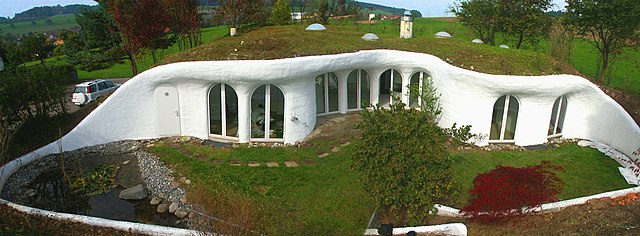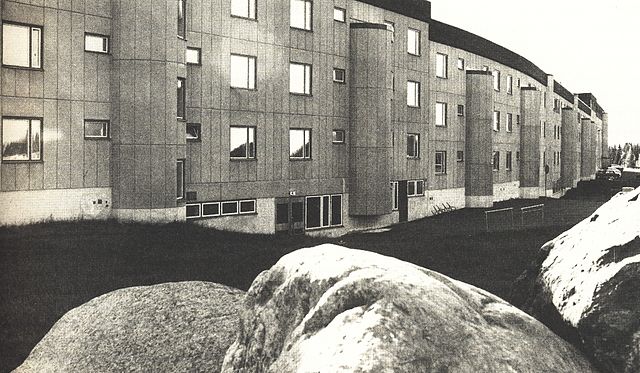Energy-efficient landscaping
Energy-efficient landscaping is a type of landscaping designed for the purpose of conserving energy. There is a distinction between the embedded energy of materials and constructing the landscape, and the energy consumed by the maintenance and operations of a landscape.
An Earth house by Peter Vetsch
Chicago City Hall Green Roof
Grid Pavement
A windbreak (shelterbelt) is a planting usually made up of one or more rows of trees or shrubs planted in such a manner as to provide shelter from the wind and to protect soil from erosion. They are commonly planted in hedgerows around the edges of fields on farms. If designed properly, windbreaks around a home can reduce the cost of heating and cooling and save energy. Windbreaks are also planted to help keep snow from drifting onto roadways or yards. Farmers sometimes use windbreaks to keep snow drifts on farm land that will provide water when the snow melts in the spring. Other benefits include contributing to a microclimate around crops, providing habitat for wildlife, and, in some regions, providing wood if the trees are harvested.
Aerial view of field windbreaks in North Dakota
One of the original buildings at Svappavaara, designed by Ralph Erskine, which forms a long windbreak
An East German windbreak promotion poster, 1952
Windbreaks in Lesja, Norway, also used to collect snow in a dry area.







